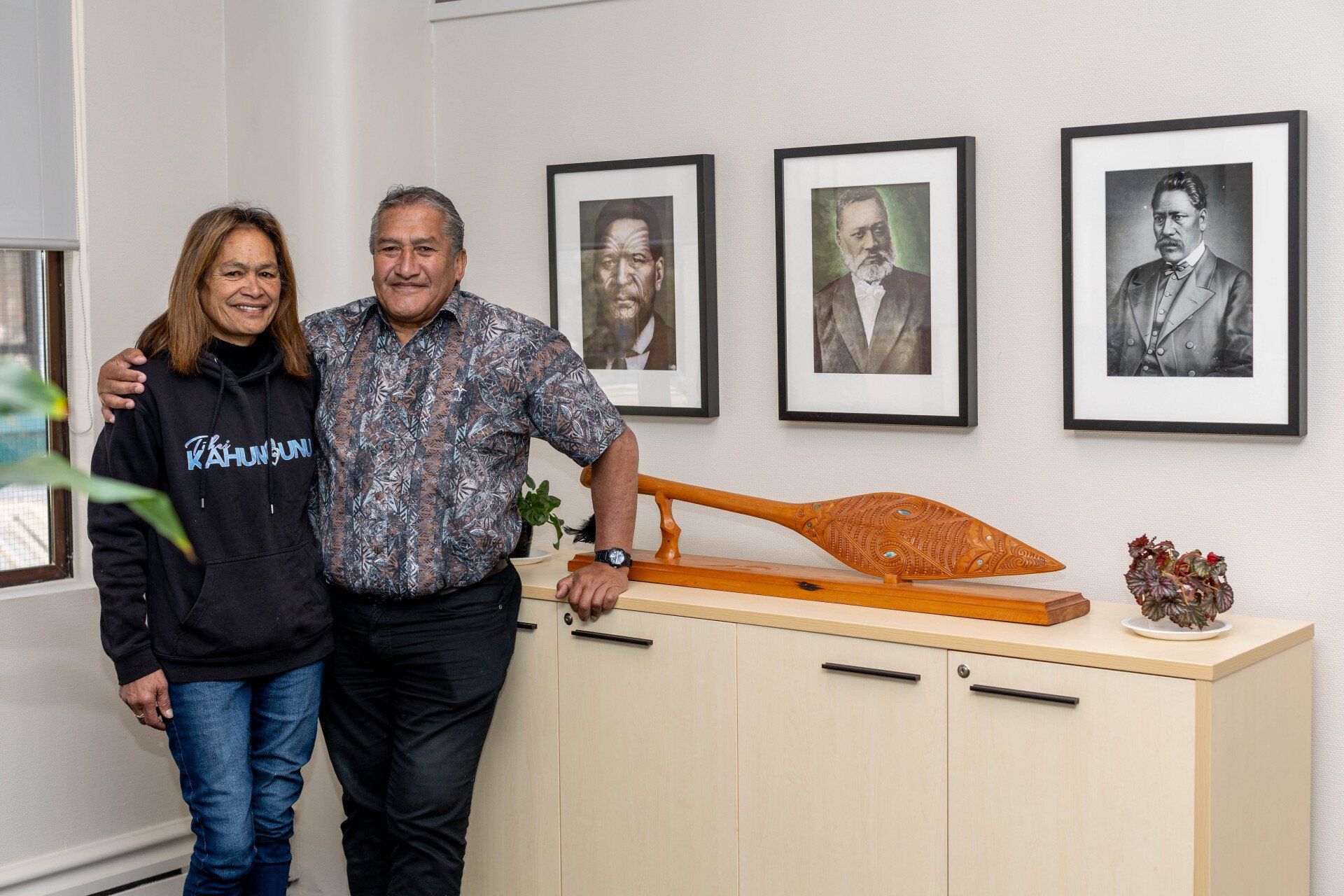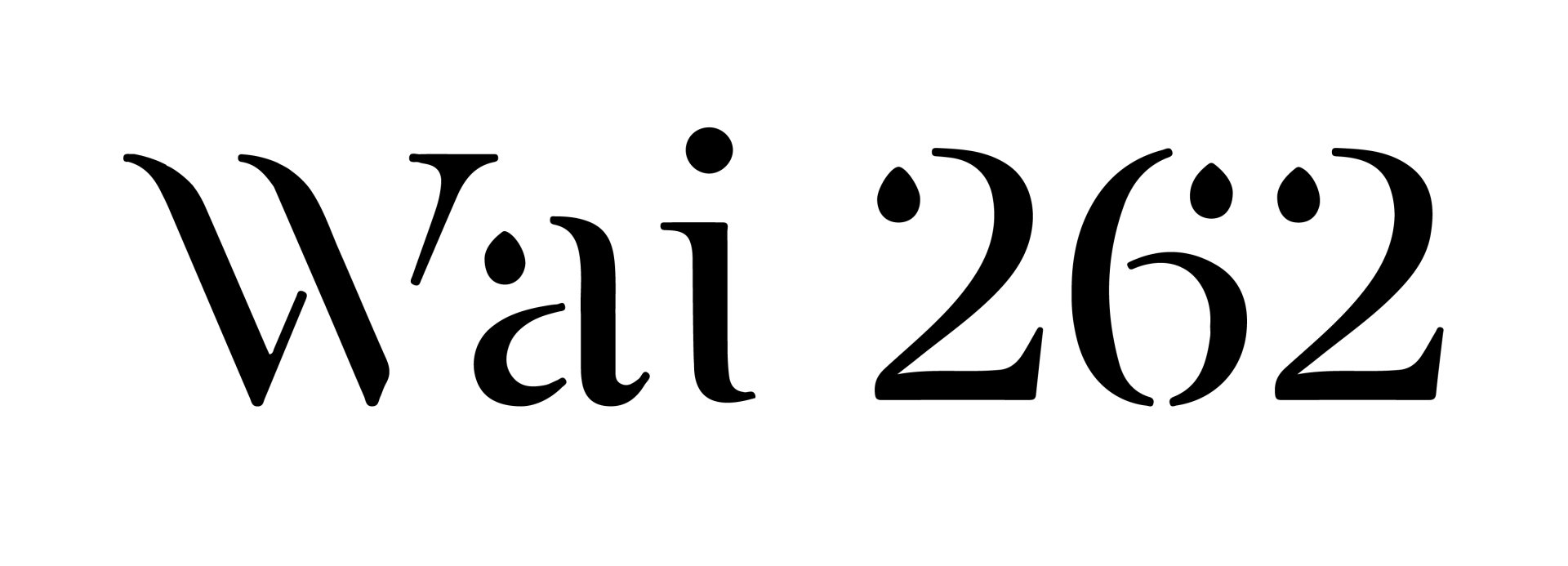
Photo: (left to right) Mere and Ngahiwi Tomoana, with photos of Karaitiana Takamoana, Henare Tomoana, Tareha Te Moananui
Photographer: Josie McClutchie
It’s the ‘matua’ of all claims
Wai 262 - Kahungunu
The Wai 262 was first brought to Ngahiwi by the late Moana Jackson (lawyer who later lodged the Wai 262 claim) and Kataraina Remene who lodged Wai 262 as an uri of Ngāti Kahungunu. “They both realised the enormity of the claim and the need for it to be carried by Kahungunu iwi,” says Ngahiwi.
Ngahiwi recalls them saying, “It’s so vast and so important that it underlies every other claim in the country.
It’s the ‘matua’ of all claims
so it needs a good support base.”
Ngahiwi first made sure if there were other claimants in Kahungunu. The Wai 262 claim had also reached the rongoā Māori group due to its critical importance to their practice and knowledge. The rongoā Māori group also put their names to the claim.
“That was Apera Clarke and Dennis who were practising rongoā in Ahuriri at the time,” reflected Ngahiwi.
When they both passed away, the claim returned back to Ngahiwi. Ngahiwi then took the claim back to Kahungunu, to be able to support each other, and their witnesses. They went from Te Wairarapa to Heretaunga, says Ngahiwi, “interviewing more than 70 people, of which 44 or 45 gave evidence.”
Ultimate kaupapa of Wai 262 is whakapapa
Ngahiwi recalls being confronted with the enormity of the vision and the claim, and that the scope of the claim was too broad to put into any one category. Ngāti Kahungunu aligned on the ultimate kaupapa of Wai 262 as whakapapa.
At their hui, Ngahiwi recalls they discussed what a dedicated outcome would be - and it was whakapapa, repatriation, and protection. Ngahiwi said regardless, “Whether it was flora or fauna, taonga works, taonga species, relationships with the Crown - it all came back to whakapapa.”
“The claim wasn’t just about protection, it was about enhancement as well. To protect something and keep it, we thought it was actually a backwards step. We need to allow our taonga to grow, thrive, and take their rightful place in the world, and be controlled by us, not by others.”
He likened them to what has happened in other treaty settlements. There are wins and gains, but they’re regulated by someone else, either the regional council, district council, national archives, and/or government agencies.
“They (others) have the final say on our win, but only we can look after our whakapapa, so we’ve applied it as we’ve gone along,” says Ngahiwi. Others have the resources, we’ve (Māori) got the mana and the whakapapa to the taonga and resources. We don’t give our mana back, we say that you can help to grip and steer it - bring your resources, not your regulations.”
The future
Looking ahead, Wai 262 for Ngahiwi is about taonga protection, whakapapa repatriation and protection.
On this, Ngahiwi says, “Once repatriated to us, we will enhance the mana of this country. No one else can do it, the Crown can’t do it, I can’t do Ngapuhi’s, we can’t do Koata’s. We have got to do our own. Whether it’s our taonga works, we just play the best in the world, or our taonga products that we sell to the world, or our flora which we do our own research on.”
As a specific Kahungunu example Ngahiwi refers to the waiata Pōkarekare Ana, “Pōkarekare Ana is still the most famous song in Aotearoa. Everyone wants to sing it. Pōkarekare ana stands on its own mana as a taonga Māori.”
“Everybody’s story must stand on its own mana, and take its rightful place in Aotearoa and the world.”


